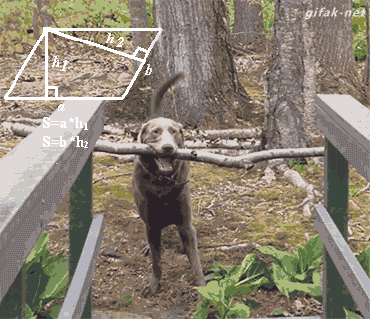As you sip your morning coffee and reflect on the days that have passed and the ones still to come, ask yourself this: how motivated and engaged is your team? How are you supporting them to work collaboratively and productively?
When your team is in sync and crushing their to-do lists and goals, it’s like everyone is riding cloud nine. But then all of a sudden, something throws this performance off kilter. According to the 2020 Gallup State of the American Workplace, only one-third of the 100 million people in the American workforce are engaged at work. The remaining two-thirds of employees are either actively disengaged or not engaged at all—they just do their job without a desire to really contribute to the company’s mission or success.
Now, you may spill your coffee cup in shock at this but that will just be another mess to clean up. There are successful team structures, processes, and traits that you can adopt and apply to your own in order to build and nurture a highly productive and collaborative team.
The Highs And Lows of Team Structures
No matter if you’re starting from the bottom or you’re here at the top, company and team structures are built to provide clarity and guidance around individual contributions and specialties and to visualize how each individual supports the whole.
The Hierarchical Structure
When you think of an organizational chart, this is most likely what you envision. A pyramid that shows the C-suite sitting at the top followed by levels of management and staff. This structure represents a top-down chain of command with a clear designation of who reports to whom. There’s a reason why so many organizations adopt this structure to build their teams but this traditional model can lead to frustration and stagnation.
For example, if you hear your team members complain about all the “bureaucratic hoops” they need to jump through in order to get a project approved or question asked, then they’re operating within a hierarchical team structure.
Here are some other strengths and weaknesses of this arrangement according to Breathe HR:
| Pros | Cons |
|
|
The Pod Structure
On the opposite end of the spectrum of the traditional structure is the pod structure. The pod structure represents a more horizontal or “flat” approach to structuring and managing teams.
Pods, also known as squads, don’t follow a “command” approach and instead function as self-governed and autonomous teams without a formal manager. Instead, there is a pod owner who is responsible for prioritizing the work and keeps the pod team aligned to their goals. The pod team is composed of team members who represent different specialties and decide together the approach for working together and achieving outcomes.
Janet Choi explains in this article on the I Done This Blog: “Top-down communication helps provide direction and purpose—the “why”—and small teams decide how to go about finding the best solution—and it’s the team leads who largely make sure everyone’s in alignment.”
The pod structure is a popular and effective way to structure teams in order to increase productivity, adaptability, knowledge sharing, and engagement. According to research by Deloitte, only 14 percent of executives believe that the traditional organizational model—with hierarchical job levels based on expertise in a specific area—makes their organization highly effective. Leading companies are pushing toward this flexible, team-centric model.
| Pros | Cons |
|
|
Besides these two options, there are several other ways to structure your teams and what you choose will depend on your business, industry, product, or services. However, how a team collaborates and communicates within a structure is more important than the way it’s set up. Let’s explore four attributes of highly collaborative and productive teams and how you can awaken them within your own.
4 Attributes Of Highly Collaborative And Productive Teams
Building a team and company culture that’s collaborative, productive, and successful is dependent on several key attributes. Interestingly, where people sit within the corporate chain is actually a small factor into great teams that thrive.
Research by Harvard Business Review found that collaboration tends to decline under two circumstances: 1.) when the team size increases beyond 20 team members and 2.) when the team, even if it’s under 20 people, are spread across multiple locations and time zones.
So what starts to break down in these two scenarios? According to the same research study by HBR, as the team becomes more complex “they are less likely—absent other influences—to share knowledge freely, to learn from one another, to shift workloads flexibly to break up unexpected bottlenecks, to help one another complete jobs and meet deadlines, and to share resources—in other words, to collaborate.”

These key qualities that face disruption as a team and company grow are the same qualities crucial to the health of a team and its ability to be collaborative and in turn, productive. When knowledge is guarded, no one wants to pitch in with a project or task, and when goals aren’t clear or achieved, resentment, aggravation, and distrust grows.
To prevent a breakdown of collaboration and productivity, leaders need to build intentional processes, value systems, and communication habits so teams can work together with ease and empowerment.
1. Alignment On Goals And Clarity On Roles
No matter which team or company structure you operate within, it’s the responsibility of leaders and managers to set the goals then hold teams and individual contributors accountable to achieve them. In practice, this means the leader communicates the problems that need to be solved and the anticipated outcomes. Highly collaborative teams are then motivated to figure out the path from the problem to the solution in order to achieve the goals.
Harvard Business Review supports this process and in their research discovered that role clarity and approach ambiguity actually contribute to higher rates of collaboration.
“Collaboration improves when the roles of individual team members are clearly defined and well understood—when individuals feel that they can do a significant portion of their work independently. Without such clarity, team members are likely to waste too much energy negotiating roles or protecting turf, rather than focus on the task. In addition, team members are more likely to want to collaborate if the path to achieving the team’s goal is left somewhat ambiguous,” explain Lynda Gratton and Tamara J. Erickson.
In other words, the first step to building collaborative and productive teams is to set goals, clarify roles, communicate expectations, and get out of the way so the team can do its best work to achieve the desired outcomes.
A popular way to put these concepts into action is to set, track, and achieve goals with the OKR method. OKR stands for Objectives and Key Results. Objectives detail the outcomes that your team and company want to achieve and the Key Results are the measurable ways you know the team is on track to reach them. Company OKRs originally began at Google in the 1990s and other global organizations like Twitter, Intel, LinkedIn, Oracle, and Atlassian have adopted and followed this method to grow their teams and businesses.
2. Operate With A Solution-Oriented Mindset
The process to collectively achieve goals and objectives is dependent on how the team approaches the outcomes. When presented with a goal, does your team immediately talk about all the reasons why they can’t reach it? Or do they brainstorm and discuss potential paths to achieve it?

The concept of a solution-oriented mindset is simple—everyone on the team should be motivated and encouraged to see the opportunities instead of the roadblocks when faced with a challenge. Now, of course, the team should analyze risks of any decision and this shouldn’t be overlooked during the process. The purpose of a solution mindset is that the entire team understands the value and effectiveness of sharing knowledge and working together to achieve their common goals—without negativity clouding their judgement.
This approach is dependent on the psychological safety of the team and corporate culture. Solutions can be difficult to identify and work towards so team members must have the confidence and support to take smart risks without fear of punishment or embarrassment. The definition of psychological safety, as defined by Amy Edmondson, the Harvard Business School Professor who coined the term, is “a belief that one will not be punished or humiliated for speaking up with ideas, questions, concerns, or mistakes.”
Julia Rozovsky, one of the leaders of Google’s Project Aristotle, believes that groups that allow individuals to speak up see high levels of team performance. However, building high-performing teams that are psychologically safe is not an easy process. Communication can easily crumble and resentments can build like sky-high walls when team members don’t have the opportunity or space to constructively share their ideas for solutions.

Two behaviors that lead to psychologically safe workplaces (in-person or digital) are conversational turn-taking and empathy. To ensure that this is practiced in team meetings or internal conversations, add a “woes and bravos” section to the agenda. On a weekly basis, the team can write down and share wins and failures from the week. This practice has two benefits—celebrating bravos boosts team morale and helps the team identify what’s working and what they should continue while identifying woes allows teams to identify what’s not working and open the conversation around what changes need to be made to achieve a solution.
And if someone has a problem or issue, the expectation should be clear that they provide a recommended solution and open up the topic for discussion so everyone can work together to solve it.
3. Offer And Provide Support
Your first group project in school most likely didn’t give you a good impression of how effective teams work together—especially if you identify as the person who took on the bulk of the workload *slowly raises hand*. Those biases and resentments for college classmates can easily transfer over into experiences in the workplace.

The support needed for successful teams is two-fold—from the manager or leader and from the team itself. Teams that thrive have leaders that set clear expectations and goals, aid the team’s growth and success, encourage the exchange of ideas, and minimize interpersonal issues. Then the team supports one another to solve challenges, overcome obstacles, and cheer each other on.
Your team can track if work is divided evenly by using Trello to plan and manage projects. By adding a team member to the Trello card that represents the task they are responsible for, everyone can visually see who’s working on what. Is Melissa’s face on 10 out of the 15 tasks? Is Kyle handling the majority of the smaller tasks listed out on the Advanced Checklist within the card that break down the granular details of the tasks? Who can step in to help with a part of the process or task in order to complete it?
Honest and open conversations about workload and even overwhelm are crucial for the team to properly understand who’s carrying the weight or how projects can be re-organized so it’s equal for all contributors.
4. Foster Trust And A Sense Of Belonging
Deloitte’s 2020 Global Human Capital Trends survey found that employees who feel a sense of belonging to their team and company felt comfortable at work, felt connected to the people they worked with, and were able to contribute to meaningful work outcomes. This feeling of comfort was identified as feeling respected and treated fairly by leaders, managers, and coworkers.
Organizations that establish this kind of trustworthy and inclusive culture are twice as likely to meet or exceed financial targets, three times as likely to be high-performing, six times as likely to be innovative and agile, and eight times more likely to achieve better business outcomes.

The same Deloitte survey and analysis found that the most effective, collaborative, and inclusive organizations created a sense of belonging around comfort, connection, and contribution by ensuring the following:
- Workers feel their perspectives are respected and valued.
- Team and company culture encourages everyone to be authentic, share their diverse perspectives, and align to the team’s and organization’s purpose.
- Workers receive clear incentives and feedback to show them how their work contributes to shared goals.
In another research study by the Center for Creative Leadership and Reina, they found that when trust is present, people step forward and do their best work, together, efficiently. They align around a common purpose, take risks, think out of the box, have each other’s backs, and communicate openly and honestly. When trust is absent, people jockey for position, hoard information, play it safe, and talk about—rather than to—one another.
Trust and belonging go hand and hand to encourage team collaboration and empowerment. In addition to encouraging practices of psychological safety and respectful communications, leaders and teams can work together to connect with each other on a regular basis, especially outside of work-related projects.
Stella Garber, Head of Marketing of Trello at Atlassian supports this approach and explains: “In order to have an engaged and productive remote workforce, teams need a combination of the right practices and rituals, as well as trust, engagement and transparency within the organization at all levels to be successful.”
Here are a few examples of how the Trello team encourages open communication and connection among its teams, especially when employees are distributed:
- Hobby-related Slack channels: Teams feel connected over shared experiences so you can promote this by creating Slack channels for specific hobbies and conversations. This encourages those random types of conversations and folks realizing they have similar interests, especially for people who don’t work together frequently.
- Team building activities: Non-work related activities, like trivia, book clubs, and virtual birthday parties, help improve team morale, communication, trust, and respect. According to Keka, 50% of positive changes in communication patterns within a workplace can be accredited to social interaction outside of the workplace (or not related to work-based projects).
- Annual retreats and off-sites: When your team is able to get together in-person, especially if many people work all around the world, off-sites and retreats are excellent ways to bring everyone together and re-align the company and teams around values, processes, and company goals.
Collaboration Starts With Structure And Ends With Team Culture
Without collaboration, there is no productivity. Well, in some cases perhaps there is, but one team member is probably stressed out while the others feel left in the dark.
Bottom line—it’s not easy to build and motivate teams. Leaders and employees alike can take these attributes and apply them to their own team structure, workflows, and culture. Instead of a one-way path leading to a dead-end, consistent collaboration and productivity become a two-way street where everyone wins.
Next:5 Ways Leaders Can Offer Encouragement And Emotional Support On A Remote Team







































